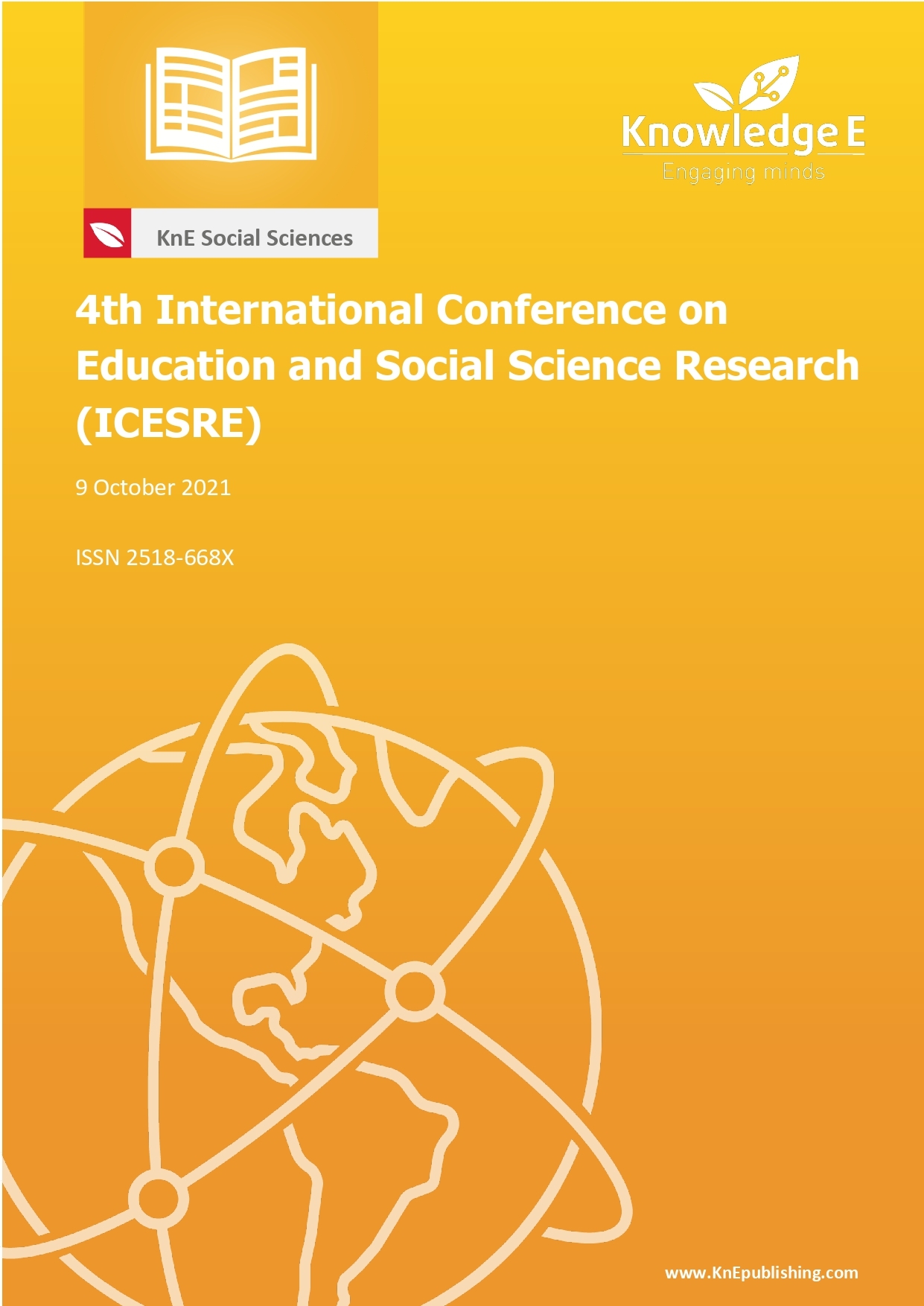Examination of Self-directed Learning Readiness Level of Students During the COVID-19 Pandemic
DOI:
https://doi.org/10.18502/kss.v7i14.11984Abstract
The changes in learning patterns during the COVID-19 pandemic demanded students to take initiative, persevere, and learn independently. Thus, this study examines the level of students’ self-directed learning readiness. The research design used was quantitative with a descriptive method. A total of 285 participants – 46 male and 239 female – were included in the study sample. The measuring instrument used was a self-directed learning readiness scale. Data analysis was done using an independent sample t-test and the assumptions were tested first, obtaining an average value of 56.16 and a standard deviation of 5.71. The results indicated that H0 was accepted, which implies that there is no significant difference in the average self-directed learning readiness between male and female students with a t value < t Table (
References
M. Siahaan, “Dampak Pandemi Covid-19 Terhadap Dunia Pendidikan.,” Jurnal Kajian Ilmiah. vol. 1, no. 1, pp. 73–80, 2020..
Hatmo SHD. Dampak pandemi Covid-19 terhadap efektivitas pembelajaran jarak jauh secara daring. Scholaria Jurnal Pendidikan dan Kebudayaan. 2021;1(2):115-122.
F. Fauziah, P. Prayitno, and Y. Karneli, “Meningkatkan Kesiapan Belajar Siswa Melalui Pendekatan Behavioral.,” AL-IRSYAD. vol. 10, no. 1, p. 96, 2020.
Sugianto IM, Lisiswanti R. Tingkat self directed learning readiness (SDLR) pada mahasiswa kedokteran. Medical Journal of Lampung University [MAJORITY]. 2016;5(5):27-31.
Hamalik O. Dasar-dasar pengembangan kurikulum. Remaja Rosdakarya, Bandung, 2007.
J.W. Creswell, Research Design: Qualitative, Quantitative, and Mixed Methods Approaches. SAGE Publications, California, 2013.
Sugiyono S. Metode penelitian kuantitatif kualitatif dan R & D. Alfabeta, Bandung; 2017.
Field A. Discovering statistics using SPSS. 3rd ed. SAGE Publications Inc;Caifornia; 2009.
Morris TH. Self-directed learning: A fundamental competence in a rapidly changing world. International Review of Education. 2019;65(4):633-53.
Boyer SL, Edmondson DR, Artis AB, Fleming D. Self-directed learning: A tool for lifelong learning. Journal of Marketing Education. 2014;36(1):20-32. https://doi.org/10.1177/ 0273475313494010
Kranzow J, Hyland N. Self-directed learning: Developing readiness in graduate students. International Journal of Self-Directed Learning. 2016;13(2):1-4.
Alharbi HA. Readiness for self-directed learning: How bridging and traditional nursing students differs? Nurse Education Today. 2018;61:231-4.
Barry M, Egan A. An adult learner’s learning style should inform but not limit educational choices. International Review of Education. 2018;64(1):31-42. https://doi.org/https:// doi.org/10.1007/s11159-017-9694-6
J.R. Kirwan, J.W. Lounsbury, and L.W. Gibson, “An Examination of Learner Self- Direction in Relation to the Big Five and Narrow Personality Traits.,” SAGE Open. vol. 4, no. 2, pp. 1–14, 2014.
Lounsbury JW, Levy JJ, Park S-H, Gibson LW, Smith R. An investigation of the construct validity of the personality trait of self-directed learning. Learning and Individual Differences. 2009;19:411-418. https://doi.org/10.1016/j.lindif. 2009.03.001
Silamut AA, Petsangsri S. Self-directed learning with knowledge management model to enhance digital literacy abilities. Education and Information Technologies. 2020;25(6):4797-815. https://doi.org/https://doi.org/10.1007/s10639-020-10187-3
H.. Ayu, S. Saputro, Sarwanto, and S. Mulyani, “Meta-Analysis of a Blended Learning Approach: Implications for Student Critical Thinking.,” In: Proceedings of the 2nd International Conference on Education and Social Science Research (ICESRE 2019). pp. 87–94. Atlantis Press, Paris, France (2020).
T. Gao, Y. Chai, and Y. Liu, “A review of knowledge management about theoretical conception and designing approaches.,” International Journal of Crowd Science. vol. 2, no. 1, pp. 42–51, 2018.
P. Angriani and H. Nurcahyo, “The influence of moodle-based e-learning on selfdirected learning of senior high school students.,” AIP Conference Proceedings. vol. 2120, no. 1, pp. 1–6, 2019.
Biney IK. Experiences of adult learners on using the Sakai learning management system for learning in Ghana. Journal of Adult and Continuing Education. 2020;26(2):262-82. https://doi.org/ 10.1177/1477971419864372
Heo J, Han S. The mediating effect of literacy of LMS between self-evaluation online teaching effectiveness and self-directed learning readiness. Education and Information Technologies. 2021;26(5):6097-108. https://doi.org/10.1007/s10639-021- 10590-4
Grandinetti M. Motivation to learn, learner independence, intellectual curiosity and self-directed learning readiness of prelicensure sophomore baccalaureate nursing students. Widener University School of Nursing; Pennsylvania; USA; 2013.
Heo J, Han S. Effects of motivation, academic stress and age in predicting selfdirected learning readiness (SDLR): Focused on online college students. Education and Information Technologies. 2018;23(1):61-71. https://doi.org/10.1007/s10639-017- 9585-2
Lasfeto D. The relationship between self-directed learning and students’ social interaction in online learning environment. Journal of E-learning and Knowledge Society. 2020;16(2):34-41.
Howell SL, Williams PB, Lindsay NK. Thirty-two trends affecting distance education: An informed foundation for strategic planning. Online Journal of Distance Learning Administration. 2003;6(3):1-8.

